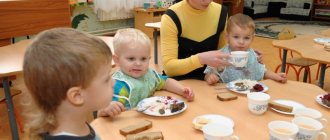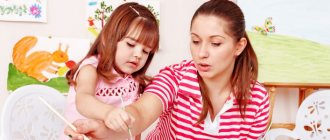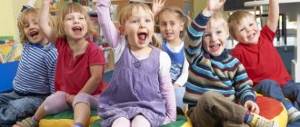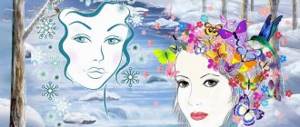Club hour at the GPD “Journey to Fairy Tales” grades 1-2
Club hour “Journey to Fairy Tales”
in an extended day group (grades 1-2)
Mystery
- a type of oral creativity. This is an intricate question or allegory that requires an answer. The riddle does not name the object directly and must have a solution. Riddles are expressed in a short and entertaining form, most often in poetry. Some riddles are constructed by replacing one object with another. But there are riddles based on a simple message of the properties, qualities of an unnamed object.
Children's riddles
broaden children's horizons, introduce them to the world around them and natural phenomena. Also, riddles for children contribute to the development of children's powers of observation, memory, ingenuity, thinking and imagination.
Subject:
Competition of riddles about fairy-tale characters
Goals:
- generalization of knowledge and expansion of ideas about fairy tales of the peoples of the world;
- development of communication skills, creative abilities;
- creating a favorable emotional environment and psychological climate in the children's team.
Tasks:
- find out what fairy tales children know,
- promote the development of children's speech, imagination, thinking, memory;
- cultivate a love of reading fiction.
Equipment:
computer, projector, interactive whiteboard (screen), books for the exhibition, books of fairy tales for prizes, tokens.
Progress of the lesson
- Organizational moment:
I remember a good fairy tale from childhood. I want you to read this fairy tale too.
Let it creep up to the very heart,
And it will give birth to a seed of kindness in him.
Boris Zakhoder
- Setting the topic of the lesson
Every child, and then an adult, strives to be smart, inquisitive, and quick-witted. We all want to be interesting conversationalists and know a lot. And this can only happen to someone who loves to read.
The very first works with which we become acquainted are fairy tales. At first these are folk tales, and for older children - author's fairy tales. After all, thanks to a fairy tale, we become more sensitive to beauty, learn to condemn evil, and admire kindness.
Reading fairy tales, we find ourselves in a mysterious world. After all, the most incredible miracles happen in fairy tales. Animals talk, people become very, very small, and magic permeates fairy tales. And today we are awaiting a journey into the mysterious world of fairy tales.
And now I ask you to look at the screen and plunge into the world of fairy tales.
The teacher reads the riddles that appear on the screen. Having guessed the riddle, the answer appears on the screen, confirming the children’s assumptions.
Puzzles:
They were waiting for mother with milk, And they let a wolf into the house... Who were these Little children?
(Seven kids)
As a child, everyone laughed at him, They tried to push him away: After all, no one knew that he was born a White Swan.
(Ugly duck)
She bought a samovar, and a mosquito saved her.
(Fly Tsokotukha)
She was an artist, as beautiful as a star, and ran away from the evil Karabas forever.
(Malvina)
While eating rolls, a guy rode on a stove. I rode around the village and married the princess.
(Emelya)
This tablecloth is famous for the fact that it feeds everyone to their fill, and that it itself is full of delicious dishes.
(Self-assembled tablecloth)
The sweet scent of apples lured that bird into the garden. The feathers glow with fire, and it’s light all around, like during the day.
(Firebird)
Like Baba Yaga, there is no one leg at all, But there is a wonderful flying machine. Which?
(Mortar)
He is a robber, he is a villain, He scared people with his whistle.
(Nightingale the Robber)
Both the little hare and the she-wolf - Everyone runs to him for treatment.
(Aibolit)
I went to visit my grandmother and brought her pies. The Gray Wolf watched her, deceived her and swallowed her.
(Little Red Riding Hood)
He was born in Italy, He was proud of his family. He is not just a bow boy, He is a reliable, loyal friend.
(Chipolino)
You won’t spend much effort on my simple question. Who made the boy with the long nose out of a log?
(Papa Carlo)
My question is not at all difficult, it is about the city of Emerald. Who was the glorious ruler there? Who was the main wizard there?
(Goodwin)
After the riddle, the video of the physical education session starts. It combines physical exercise with eye exercises.
She is the most important mystery of all, Even though she lived in the cellar: She helped grandma and grandpa pull a turnip out of the garden bed.
(mouse)
Here's a very easy, short question: Who put the wooden nose in the ink?
(Pinocchio)
The beautiful maiden is sad: She doesn’t like spring, It’s hard for her in the sun! The poor thing is shedding tears!
(Snow Maiden)
It was baked from flour and mixed with sour cream. He was chilling at the window, He was rolling along the path. He was cheerful, he was brave, and on the way he sang a song. A bunny, a gray wolf and a brown bear wanted to eat him. And when the baby met a red fox in the forest, he couldn’t get away from her. What kind of fairy tale?
(Kolobok)
The nose is round, with a snout, It is convenient for them to rummage in the ground, The tail is small with a hook, Instead of shoes - hooves. Three of them - and how similar the friendly Brothers are. Guess without a hint, who are the heroes of this fairy tale?
(Three piglets)
Near the forest, on the edge, Three of them live in a hut. There are three chairs and three mugs, three beds, three pillows. Guess without a hint, who are the heroes of this fairy tale?
(Three Bears)
The swamp is her home. Vodyanoy comes to visit her.
(Kikimora)
The fat man lives on the roof, he flies higher than everyone else.
(Carlson)
An elderly man with such a beard. He offends Pinocchio, Artemon and Malvina, and in general for all people He is a notorious villain. Do any of you know who this is?
(Karabas-Barabas)
If only the evening would quickly approach, And the long-awaited hour would come, So that I could go to a fairy-tale ball in a gilded carriage! No one in the palace will know where I come from or what my name is, But as soon as midnight comes, I will return to my attic.
(Cinderella)
She was a friend of the gnomes and, of course, she is familiar to you.
(Snow White)
Thumbelina is a blind groom who lives underground all the time.
(Mole)
The young man's arrow landed in the swamp, so where is the bride? I'm eager to get married! And here is the bride, eyes on the top of her head. The bride's name is...
(Princess Frog)
Confident in himself, even if he is incompetent, And by nature he is a big arrogant, Come on, you can guess him, Known to everyone under the name...
(Dunno)
An accordion in his hands, a cap on the top of his head, and Cheburashka sits important next to him. The portrait of friends turned out excellent, there is Cheburashka on it, and next to it...
(Crocodile Gena)
He comes to everyone in the dead of night, And opens his magic umbrella: A multi-colored umbrella - sleep caresses the eyes, A black umbrella - there are no traces of dreams. Obedient children are given a multi-colored umbrella, and naughty children are given a black one. He is a gnome wizard, he is known to many, Well, tell me what he is called a gnome.
(Ole-Lukoie)
At the end the song “Fairy Tale” sounds
Now guys, count who has the most tokens. The winners come to the board and receive prizes - books of fairy tales.
Organization of a club hour in the GPD article on the topic
Organization of a club hour at the GPD.
The federal state educational standard for primary general education provides for the implementation of the basic educational program of primary general education through classroom and extracurricular activities. One of the models for organizing extracurricular activities for students is the work of extended day groups.
One of the important tasks in working with children in the GPA is to ensure that leisure hours free from homework are fun, interesting and contribute to the realization of children’s creative abilities. Schoolchildren's leisure time should be organized correctly, in a certain sequence: a sports hour before self-preparation, a club hour after self-preparation, and, finally, a walk.
Club hour is a form of organization of extracurricular activities of students, aimed at the rational use of free time for the purpose of comprehensive improvement of the personality of schoolchildren, the development of their individual inclinations and abilities, and satisfaction of the diverse interests of students within the framework of an hour of interesting leisure time. . The teacher prepares it in advance, sets goals and objectives, determines techniques and methods of educational influence. If necessary, you can involve pupils, parents, members of the teaching staff - the organizing teacher, music director, librarian, museum employee, etc. - in participation.
The main requirements that a club hour must meet are:
• the content of the club hour should be novel, unusual, attractive to children, arouse their activity, the desire to quickly take on an exciting activity;
• club hours should be a kind of school for self-education of younger schoolchildren, their knowledge of themselves and the people around them;
• club hour involves free communication, creative interaction of children with each other, the teacher and those adults who take part in the club lesson, which helps to develop friendship and camaraderie relations, cooperation skills and a culture of communication among younger schoolchildren.
In the methodological structure of the club hour, several successive stages can be distinguished:
The preparatory stage involves organizing the psychological mood of children for the future club hour.
The mobilizing stage precedes the main activity of junior schoolchildren during the club hour. It is necessary to attract children's attention to the very topic of the club hour, to switch them from previous activities, to establish boundaries of order and discipline in the conditions of hobby classes.
The main stage implements the main content of the club hour. The teacher’s task is to maintain children’s communication and cooperation.
The final stage involves a general understanding of everything that happened at the club hour. It is necessary for the students themselves to speak out on the main issues: what was good, interesting, fun; what was bad, didn’t work out, didn’t like it; what new things did you learn and do; what I learned myself and what I taught my comrade, who benefited from our undertakings, and who felt bad; which I would like to repeat.
Educational influence on the child during club hours is carried out in various educational areas:
- aesthetic education – an aesthetic attitude towards life (work, nature, art, behavior) is formed, a sense of beauty develops;
- physical education presupposes the correct physical development of the student, the development of motor skills and abilities, the formation of hygienic skills;
- labor education - the emphasis is on the practical application of theoretical knowledge by schoolchildren; labor education is comprehensive and includes ideas about engineering and technology, the ability to solve practical problems, and achieve high-quality results;
- environmental education – the main task is specific practical environmental activities;
- moral education - the formation of a moral being, the education and development of moral feelings, the development of skills and habits of moral behavior;
- mental education.
Predicted results.
1. Establishment of friendly relations in the team, based on mutual assistance and mutual support.
2. Knowledge of ideas about the rules of behavior at school, at home, on the street, in public places, in nature.
3. Development of communication skills and tolerance.
4. Acquisition of new knowledge and skills as a result of classes at club hours.
5. General improvement of students, strengthening their health.
6. Expanding the horizons of children.
7. Increasing the creative activity of children by involving them in socially significant activities.
The forms of its implementation can be very different: practical classes, role-playing games, competitions, holidays, conversations, quizzes, reading fiction, excursions, KVN, classes of permanent clubs, etc.
In our educational institution, educators use all of the above forms of conducting club hours in their work. Children actively attend hobby groups: “Health Lessons” (led by Egorova G.N.), “Young Artist” (led by Erokhina V.P.), “I am a Researcher” (led by Korpacheva S.A.), “Young mathematician” (director: Lepekhina T.V.), “Skillful hands” (director: Baranova L.V.). Various competitions are systematically held: reading, crafts, drawings, etc.
Educational events and holidays are held at least 1-2 times a month.
Conclusion.
The educational space of the extended day is a limitless space. The field of activity here has no boundaries, no clearly defined framework. The creative approach of a competent teacher makes it possible to create such conditions in the afternoon that children of primary school age have the opportunity to express themselves, learn about the world around them and gain the experience of positive communication.
Club hours, competently organized and conducted by the teacher, play an important role in creating conditions for the development of the child’s personality, satisfying his needs for creativity, communication, providing a field of activity for self-expression, self-affirmation, and self-education.








